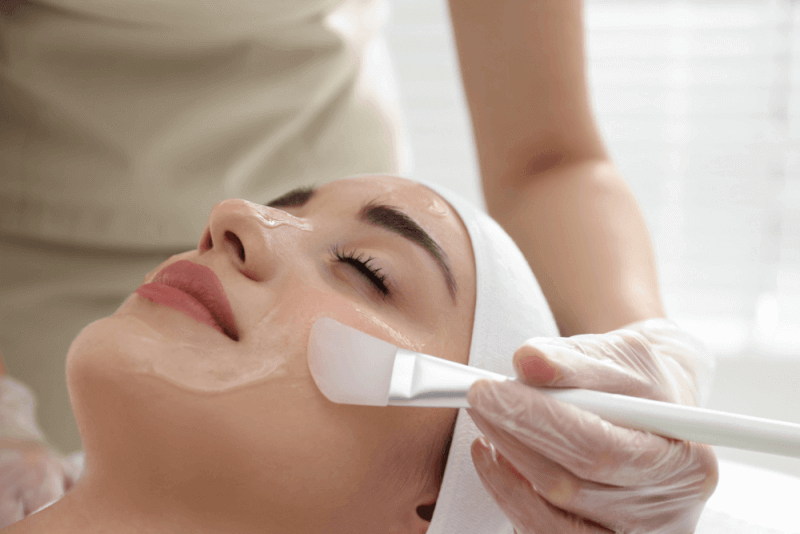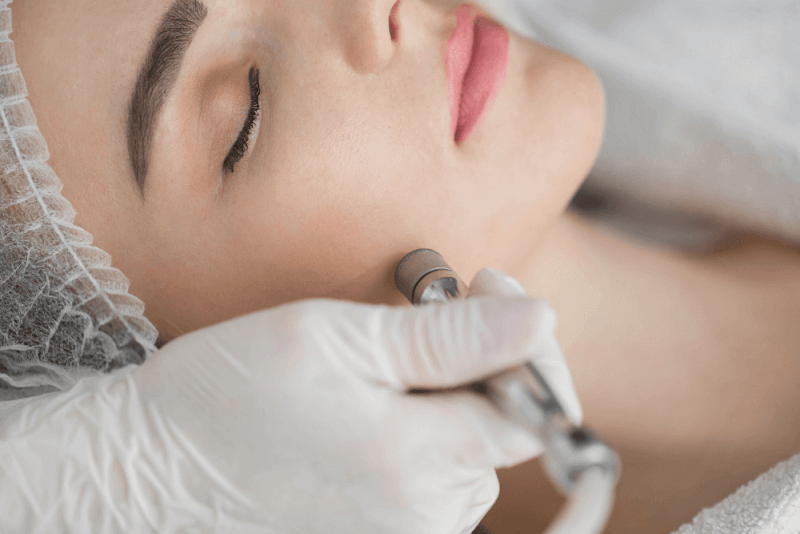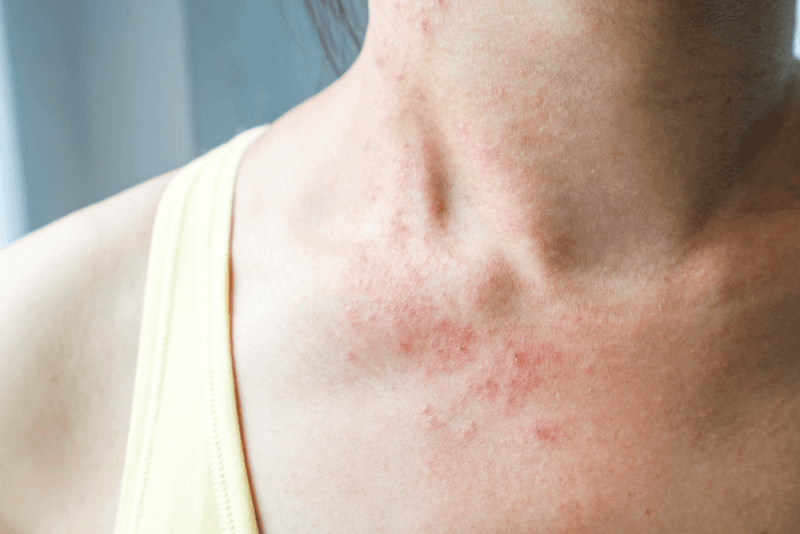What is chemical peeling?
Chemical peeling is often used as the first step to ensure healthier skin and to address various skin problems. Different chemical agents are used and applied to the skin for the chemical peeling procedure. In this way, controlled damage is created on the skin. This process allows the healthy skin underneath the dead cells to emerge.
The main purpose of chemical peeling applications is to create controlled damage to the desired layer of the skin. This damage increases the production of collagen and elastin. As a result, it is possible to address skin problems. Various agents are used in the chemical peeling process. The most commonly used are AHA group such as fruit acid, glycolic acid, and lactic acid, as well as BHA group such as salicylic acid.
How is chemical peeling applied?
Chemical peeling can be applied not only to the face area but also to the neck, arm, and décolleté areas. Therefore, the peeling agent must be primarily determined based on the area of application and the specific problem. Chemical peeling should be performed by specialists in a clinical setting. Additionally, it can be applied in three different types: deep, medium, and superficial.
Superficial peeling
The chemical peeling process applied to the epidermis layer of the skin is called superficial peeling. During the application to the outermost layer of the skin, individuals initially feel a slight burning and stinging sensation. This feeling passes quickly. Superficial peeling is preferred for treating uneven skin tone, acne, and dry skin. It is recommended to apply this procedure in 4-8 sessions at intervals of 1-4 weeks for successful results.
Medium-depth peeling
In medium-depth peeling applications, the upper dermis, known as the middle layer, in addition to the epidermis layer, is targeted. After this process, which allows deeper exfoliation of the skin, healthy skin emerges. For successful treatment, it is recommended to apply 2-4 sessions at intervals of 2-4 months.
Deep chemical peeling
In this peeling method, which targets the epidermis, dermis, and middle skin cells, the recovery time is much longer. Deep chemical peeling is a method applied in a single session.
What is the purpose of chemical peeling?
The chemical peeling process is one of the most commonly used cosmetic procedures for addressing various skin problems. The typical purposes of the application include the following:
- Sunburn-induced spots
- Hereditary factors
- Reduction of fine wrinkles
- Age-related spots
- Freckles
- Crusty or dark spots with cancer potential
- Hormonal or pregnancy-related spots
- Rosacea
- Treatment of acne scars or active acne
What skin problems can chemical peeling address?
Chemical peeling is a process that allows the peeling of damaged skin for any reason, making way for new, healthy, and vibrant skin. Therefore, the issues it can address include the following:
- Acne
- Photo damage
- Skin spots
- Dull and lifeless skin
- Fine wrinkles
- Large pores
What should be considered after chemical peeling?
The points to be considered after the chemical peeling process include the following:
- Scabs that may form in the treated area should not be picked.
- Moisturizers and sunscreens recommended by the doctor should be used as instructed.
- Care should be taken to avoid direct sun exposure on the skin.
- Makeup should not be applied within the specified time after the procedure.
- Apart from the care products recommended by the doctor, no other products should be applied to the skin.
What are the risks of chemical peeling?
Chemical peeling procedures should be performed in a controlled manner by a physician. Otherwise, unwanted results may occur. These complications include the following:
- Redness on the skin
- Formation of white and brown spots
- Increased acne
- Localized skin infections
- Triggering of cold sores
- Allergic reactions
- Formation of permanent scars
Who should avoid chemical peeling?
The individuals who are not recommended to undergo chemical peeling include the following:
- Those exposed to intense sunlight in daily life
- Individuals with a dark skin tone
- Those with a history of keloid or hypertrophic scars
- Those using blood thinners
- Aspirin users
- Those with open wounds or cold sores in the application area
- Pregnant women
- Women who are breastfeeding
- Those using medications that cause photosensitivity
How should skin care be after chemical peeling?
It is recommended that patients follow their doctor’s instructions on how to care for their skin after the chemical peeling procedure. However, the general points to consider after the procedure include the following:
- For two weeks after the procedure, products with moisturizing and soothing properties should be used.
- Products with sensitive content should be used for skin cleansing. To protect the skin from sunlight, a sunscreen with at least SPF 30 should be applied.
- In cases of redness and burning after the treatment, the use of a cream with a low percentage of cortisone is recommended.








